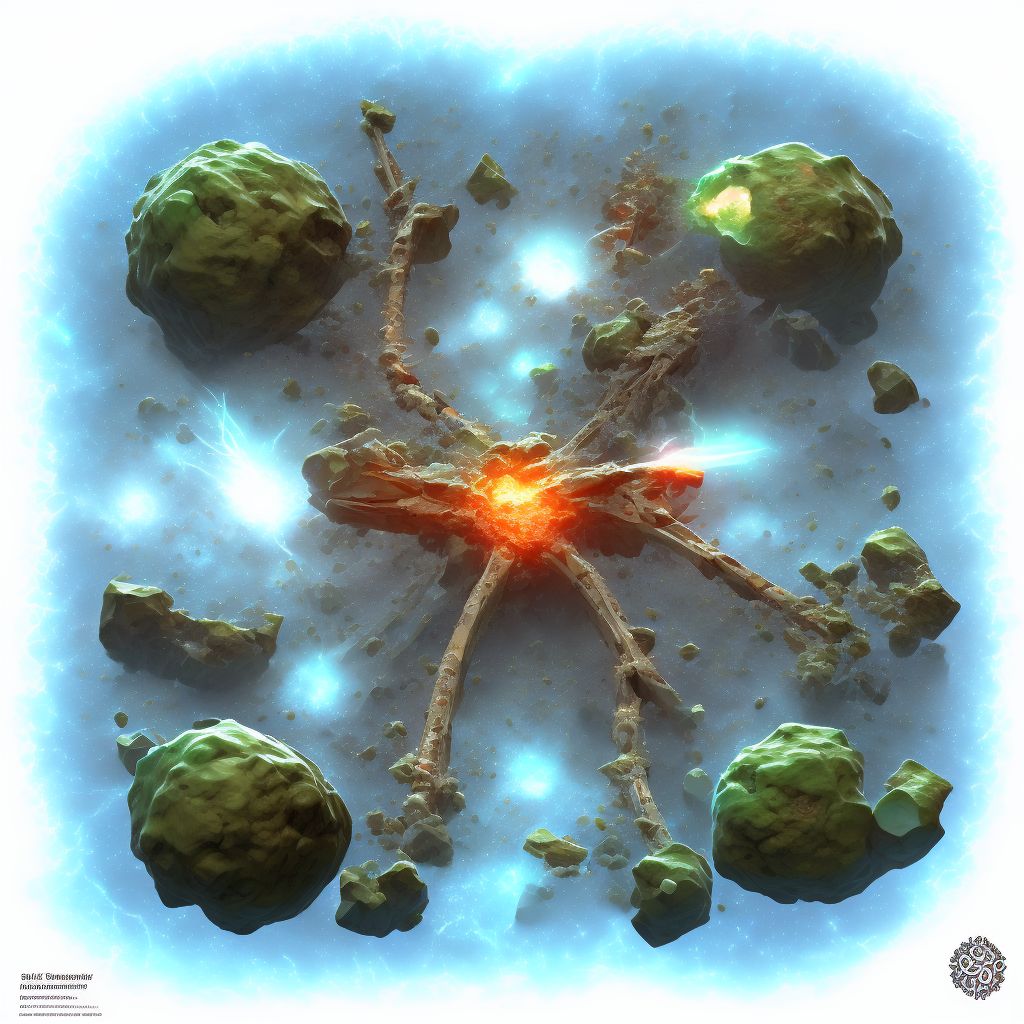
Displaced segmental fracture of shaft of right tibia, subsequent encounter for open fracture type I or II with nonunion Save
ICD-10 code: S82.261M
Disease category: S82.261: Displaced segmental fracture of shaft of right tibia
Displaced Segmental Fracture of Shaft of Right Tibia: Understanding the Condition
A displaced segmental fracture of the shaft of the right tibia is a severe injury that involves the breaking of the tibia bone in multiple places. This type of fracture occurs when the bone is fractured into two or more segments, often resulting in an open fracture type I or II with nonunion. It is crucial to understand the nature of this condition to effectively manage and treat it.
When a displaced segmental fracture occurs, the bone breaks into two or more pieces, causing the fragments to misalign. This misalignment can be accompanied by an open fracture, where the bone penetrates through the skin or creates a wound leading to the fracture site. Open fractures are typically classified into different types based on their severity, with type I or II indicating mild to moderate soft tissue damage.
Nonunion refers to the failure of bone fragments to heal or join together properly. In the case of a displaced segmental fracture, nonunion can occur due to various reasons, such as inadequate blood supply, infection, poor nutrition, or inadequate immobilization. Nonunion prolongs the healing process and may require additional medical intervention for proper healing to take place.
- Causes: Displaced segmental fractures of the shaft of the right tibia can result from high-impact trauma, such as car accidents, falls from significant heights, or sports-related injuries. The severity of the fracture can vary depending on the force applied to the bone.
- Symptoms: Common symptoms of a displaced segmental fracture include severe pain, swelling, deformity, and an inability to bear weight on the affected leg. In open fractures, there may also be visible bone protrusion or an open wound.
- Diagnosis: To diagnose a displaced segmental fracture, a healthcare professional will perform a physical examination, review the patient's medical history, and order imaging tests such as X-rays or CT scans to assess the extent and location of the fracture.
Managing a displaced segmental fracture of the shaft of the right tibia requires prompt medical attention. Treatment options may involve surgical intervention, such as internal fixation with plates and screws or an external fixator to stabilize the fracture and promote healing. Rehabilitation and physical therapy are often necessary to regain strength, mobility, and functionality in the affected leg.
It is important to consult with a healthcare professional for an accurate diagnosis and appropriate treatment plan for a displaced segmental fracture of the shaft of the right tibia. Early intervention and proper care can significantly improve the chances of successful healing and recovery.
Treatment of Displaced segmental fracture of shaft of right tibia, subsequent encounter for open fracture type I or II with nonunion:
Treatment Options for Displaced Segmental Fracture of Shaft of Right Tibia, Subsequent Encounter for Open Fracture Type I or II with Nonunion
A displaced segmental fracture of the shaft of the right tibia, subsequent encounter for open fracture type I or II with nonunion, can be a complex and challenging condition to treat. However, there are several treatment options available to ...
To see full information about treatment please Sign up or Log in